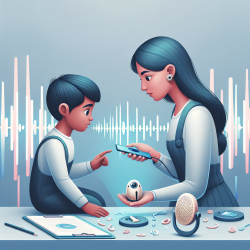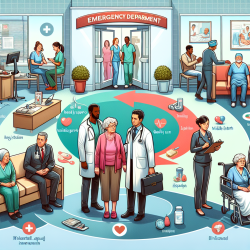Introduction
The integration of technology into speech therapy has been transformative, particularly with the advent of smartphones and specialized apps. A recent study titled "Influence of Smartphones and Software on Acoustic Voice Measures" sheds light on the potential of these devices in enhancing voice monitoring and therapy. This blog explores how practitioners can leverage these findings to improve their therapeutic outcomes.
Understanding the Research
The study conducted by Grillo et al. (2016) examined the variability of voice measures using different recording devices, including smartphones and head-mounted microphones, alongside various software programs. The findings indicated no significant within-subject variability across devices and software, suggesting that smartphones can reliably record daily voice measures, reflecting the effects of vocal loading.
Implications for Practitioners
For speech-language pathologists (SLPs), these findings are significant. Here's how practitioners can implement the outcomes of this research:
- Daily Monitoring: Encourage clients to use smartphone apps to record their voices before and after daily activities. This provides a comprehensive view of vocal loading effects.
- Data Collection: Utilize apps that record .wav files at a 44,100Hz sampling rate. These files can be easily analyzed using software like Praat, offering detailed insights into voice quality.
- Cost-Effective Solutions: With free apps and software, practitioners can conduct thorough voice evaluations without the need for expensive equipment.
Encouraging Further Research
While the study provides promising results, it also highlights the need for further research. Practitioners are encouraged to explore:
- Comparative Studies: Investigate the reliability of different smartphone models and apps in capturing voice measures.
- Longitudinal Studies: Assess the long-term effects of daily voice monitoring on therapy outcomes.
- Algorithm Development: Develop and refine algorithms to enhance the accuracy of voice measure calculations across various devices and software.
Conclusion
Smartphones and apps offer a practical and accessible solution for voice monitoring, enabling SLPs to provide more personalized and effective therapy. By embracing these technological advancements, practitioners can enhance their practice and achieve better outcomes for their clients.
To read the original research paper, please follow this link: Influence of Smartphones and Software on Acoustic Voice Measures.










